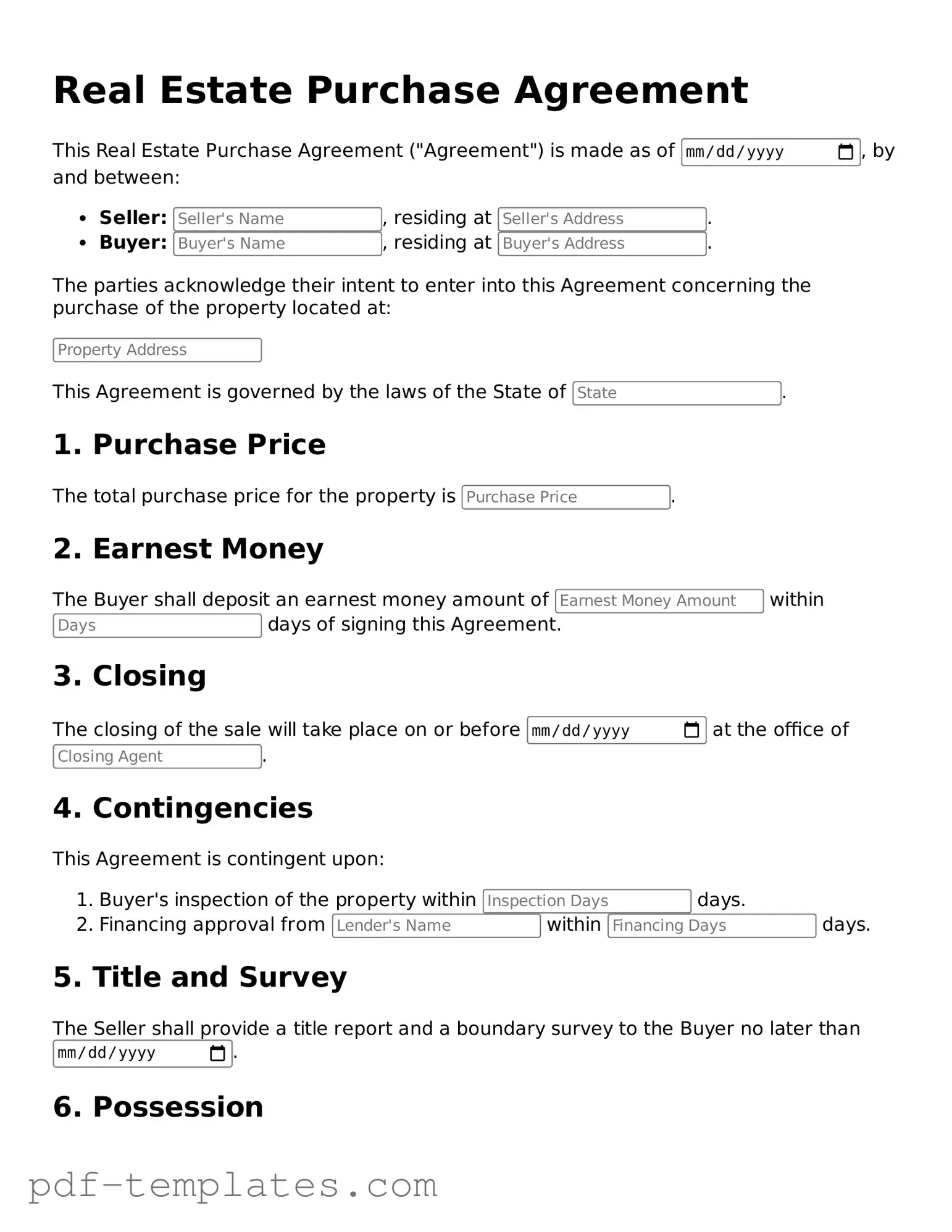The Lease Agreement is similar to the Real Estate Purchase Agreement in that both documents outline the terms under which a property is used or transferred. A Lease Agreement typically defines the rental period, payment terms, and responsibilities of both the landlord and tenant. While the Purchase Agreement is focused on the sale of property, the Lease Agreement governs the temporary use of property, highlighting the differences in ownership versus tenancy.
The Option to Purchase Agreement provides a potential buyer with the right to purchase a property within a specified timeframe. This document shares similarities with the Real Estate Purchase Agreement as it outlines key terms such as the purchase price and conditions for the sale. However, the Option to Purchase Agreement does not require immediate commitment, allowing the buyer to decide later whether to proceed with the purchase.
To effectively transfer ownership, it's important to utilize a proper legal document like the Texas Trailer Bill of Sale form, which facilitates the sale process and ensures all necessary information is accurately captured.
The Seller’s Disclosure Statement is another document related to the Real Estate Purchase Agreement. It requires the seller to disclose known issues with the property, such as defects or environmental hazards. This transparency is crucial for the buyer, as it informs their decision-making process. Both documents aim to protect the interests of the parties involved, though the Disclosure Statement focuses more on the condition of the property rather than the sale terms.
The Purchase and Sale Agreement is often used interchangeably with the Real Estate Purchase Agreement. Both documents serve the same purpose: to formalize the sale of real estate. They detail the terms of the sale, including price, contingencies, and closing dates. However, the Purchase and Sale Agreement may also include additional provisions specific to the transaction, making it a more comprehensive document in some cases.
The Addendum to Purchase Agreement is a document that modifies or adds to the original Real Estate Purchase Agreement. This might include changes to the closing date, financing terms, or contingencies. While the main agreement sets the foundation for the sale, the Addendum allows for flexibility and adjustments based on negotiations or new information that arises during the buying process.
The Real Estate Listing Agreement is similar in that it involves the sale of property, but it specifically pertains to the relationship between the seller and the real estate agent. This document outlines the agent's responsibilities and the commission structure. While the Real Estate Purchase Agreement focuses on the sale itself, the Listing Agreement sets the stage for how that sale will be marketed and facilitated.
The Title Commitment is another important document that relates to real estate transactions. It outlines the condition of the title and any liens or encumbrances on the property. While the Real Estate Purchase Agreement establishes the terms of the sale, the Title Commitment ensures that the buyer receives clear ownership upon closing, protecting their investment and interests.
The Closing Disclosure is crucial for the final steps of a real estate transaction. It provides a detailed account of all costs associated with the purchase, including loan terms, closing costs, and other fees. Similar to the Real Estate Purchase Agreement, it aims to ensure transparency and clarity for both parties. However, the Closing Disclosure is specifically focused on the financial aspects of the transaction that occur at closing.
The Escrow Agreement is another document that may accompany a Real Estate Purchase Agreement. It outlines the terms under which a neutral third party holds funds or documents until the transaction is completed. This agreement is essential for ensuring that both the buyer and seller fulfill their obligations before the transfer of ownership takes place. It adds an additional layer of security to the transaction, similar to the protections offered by the Purchase Agreement.
